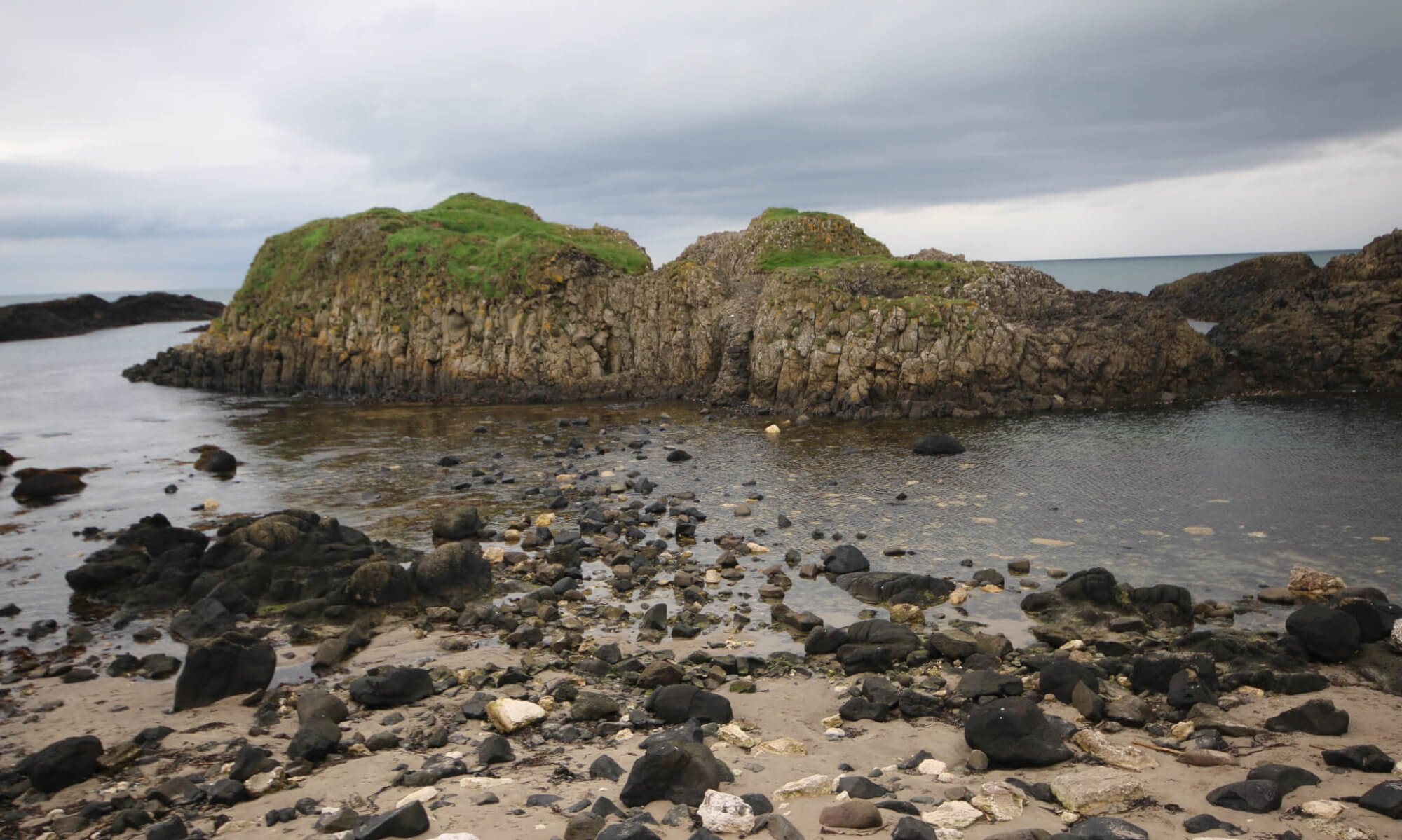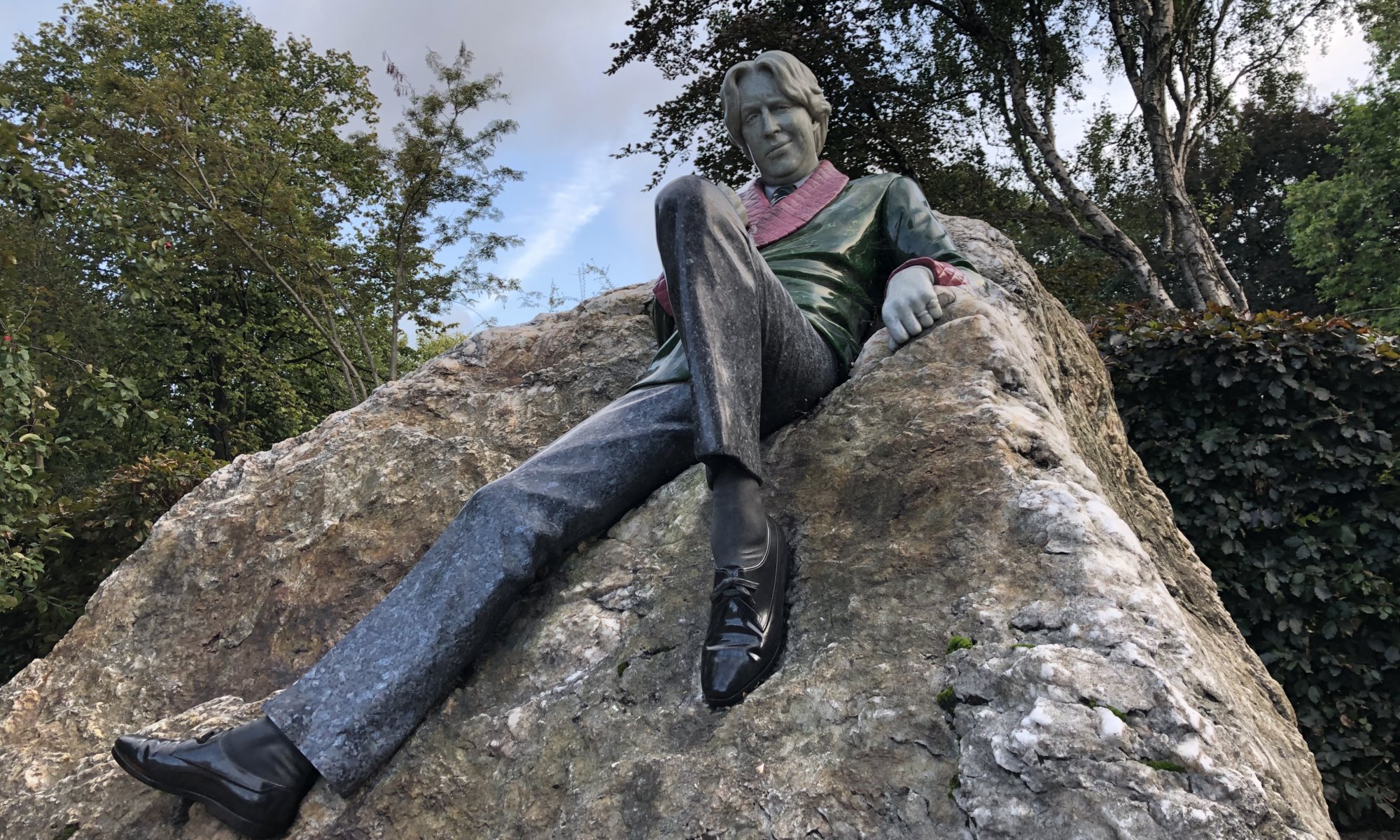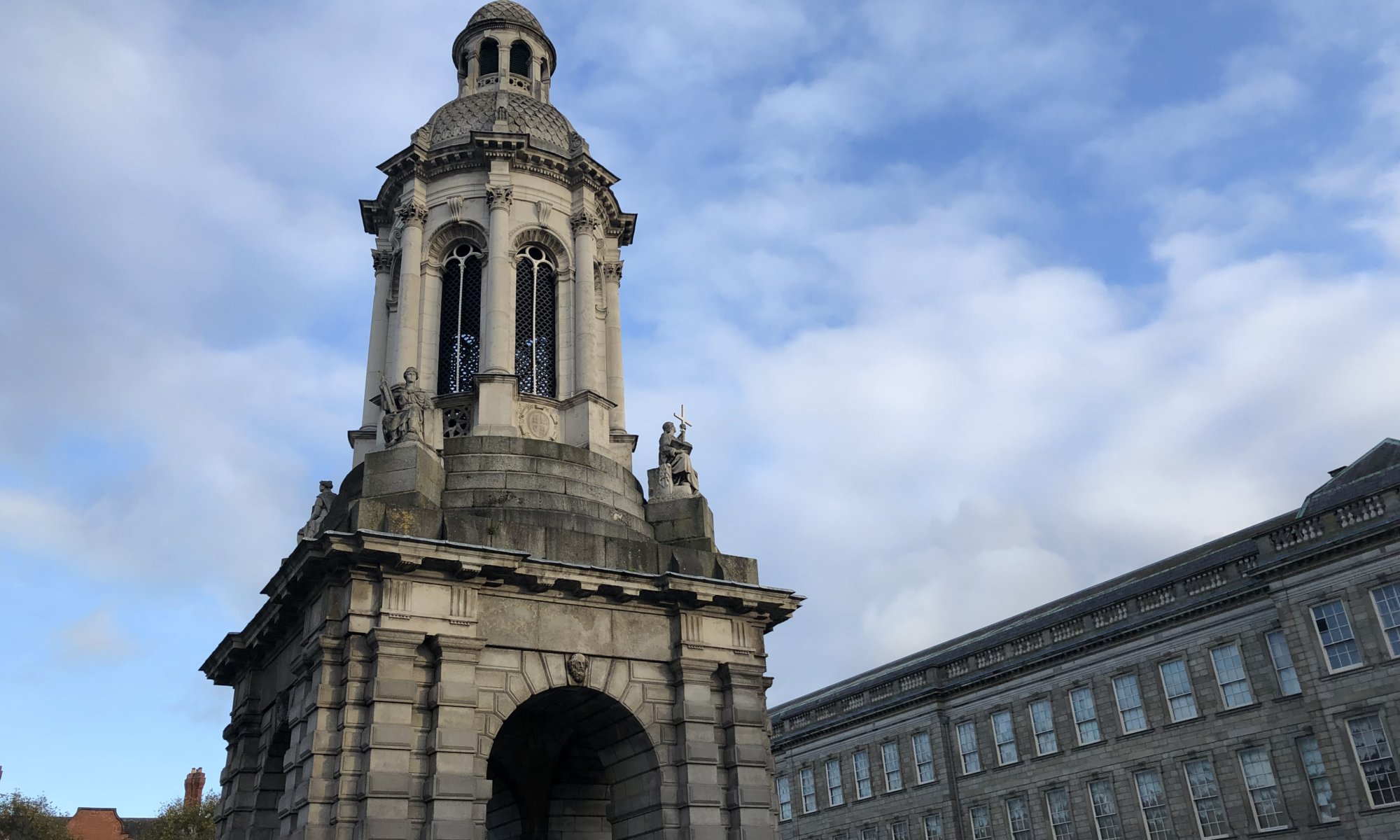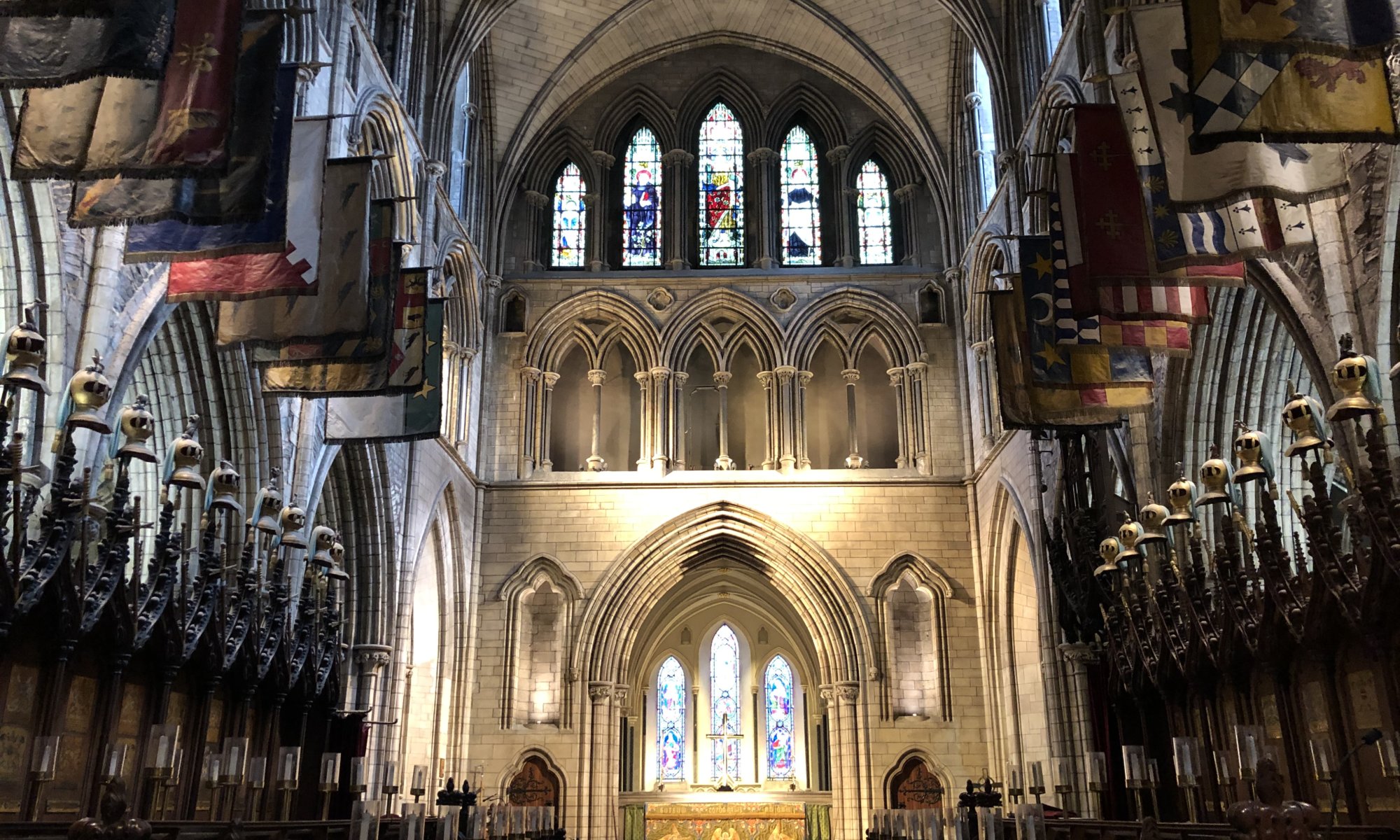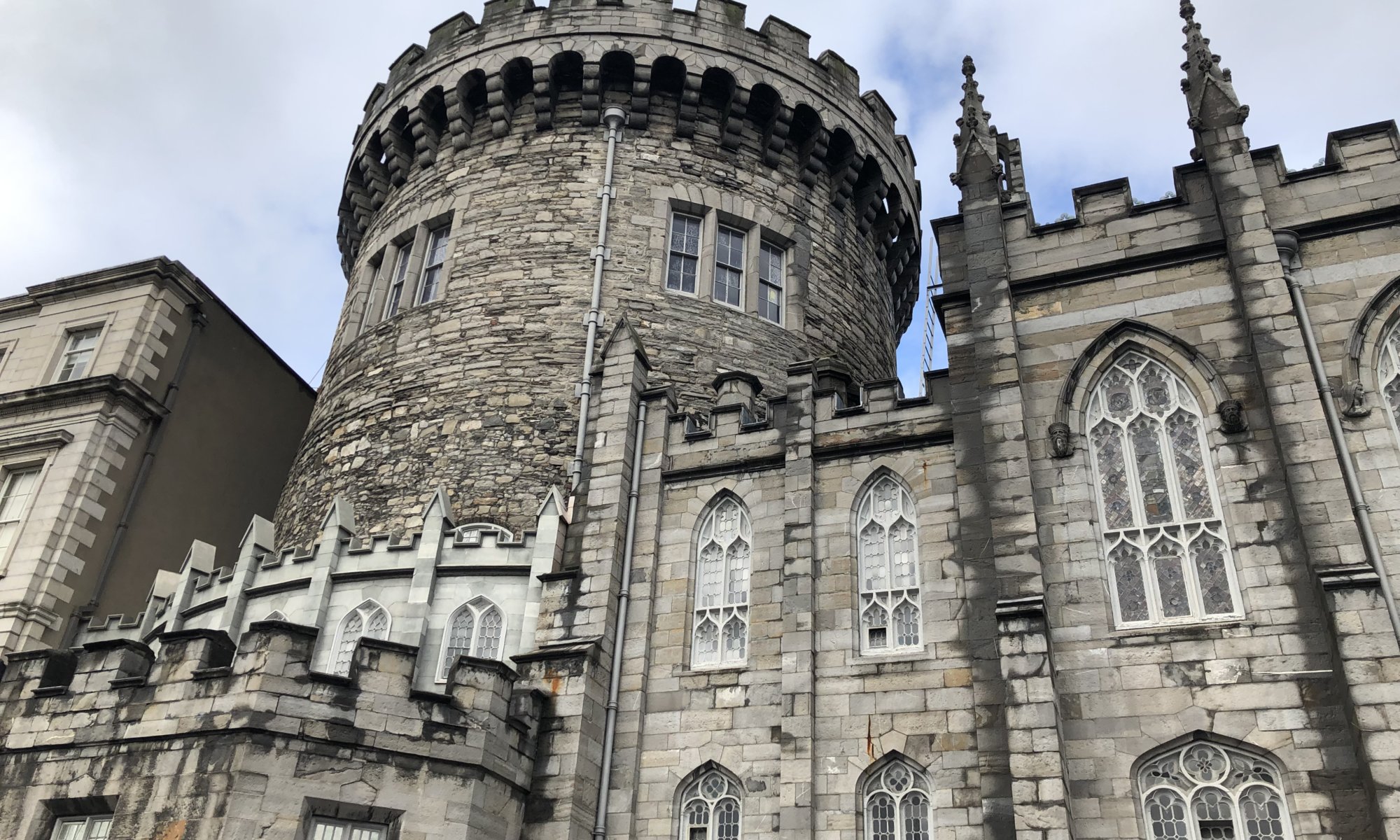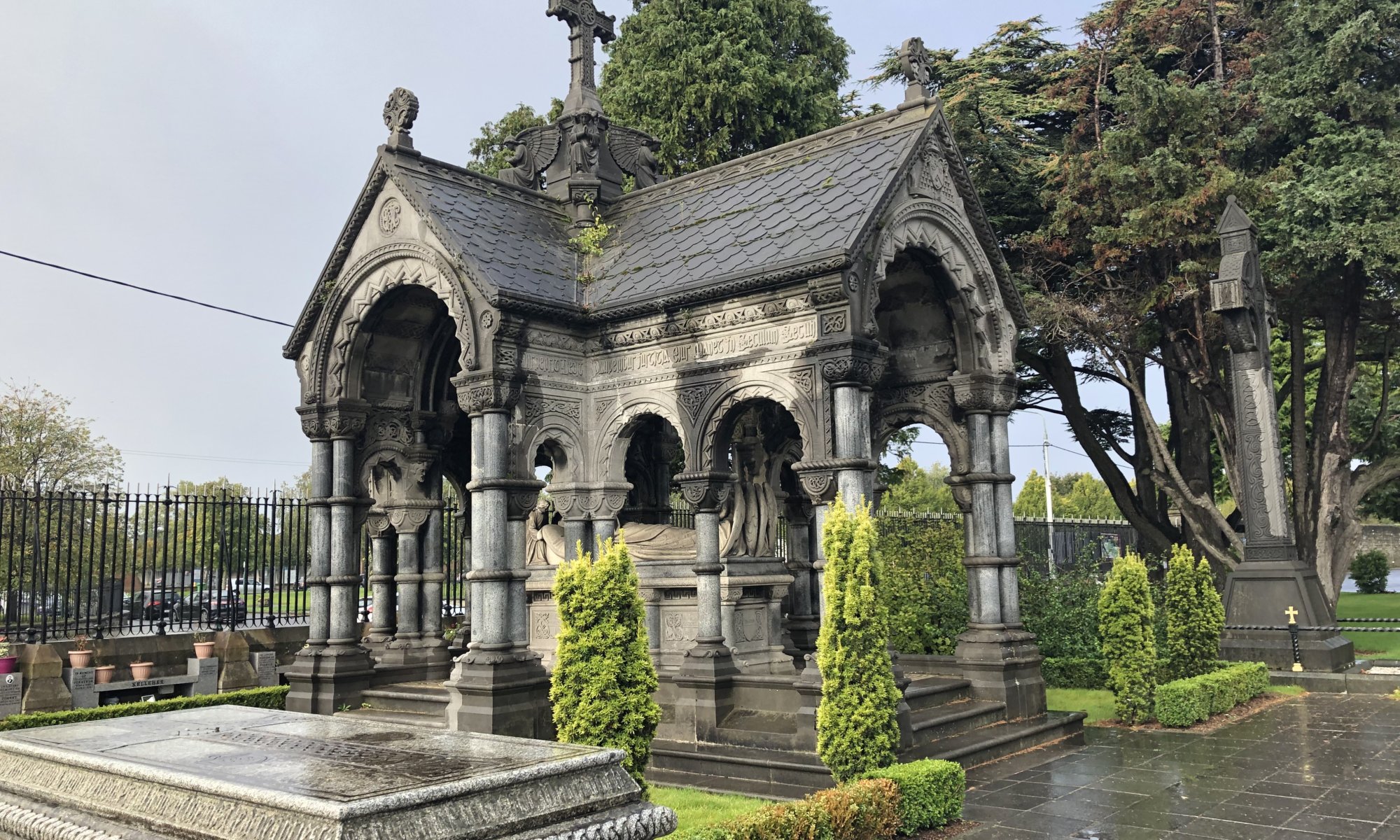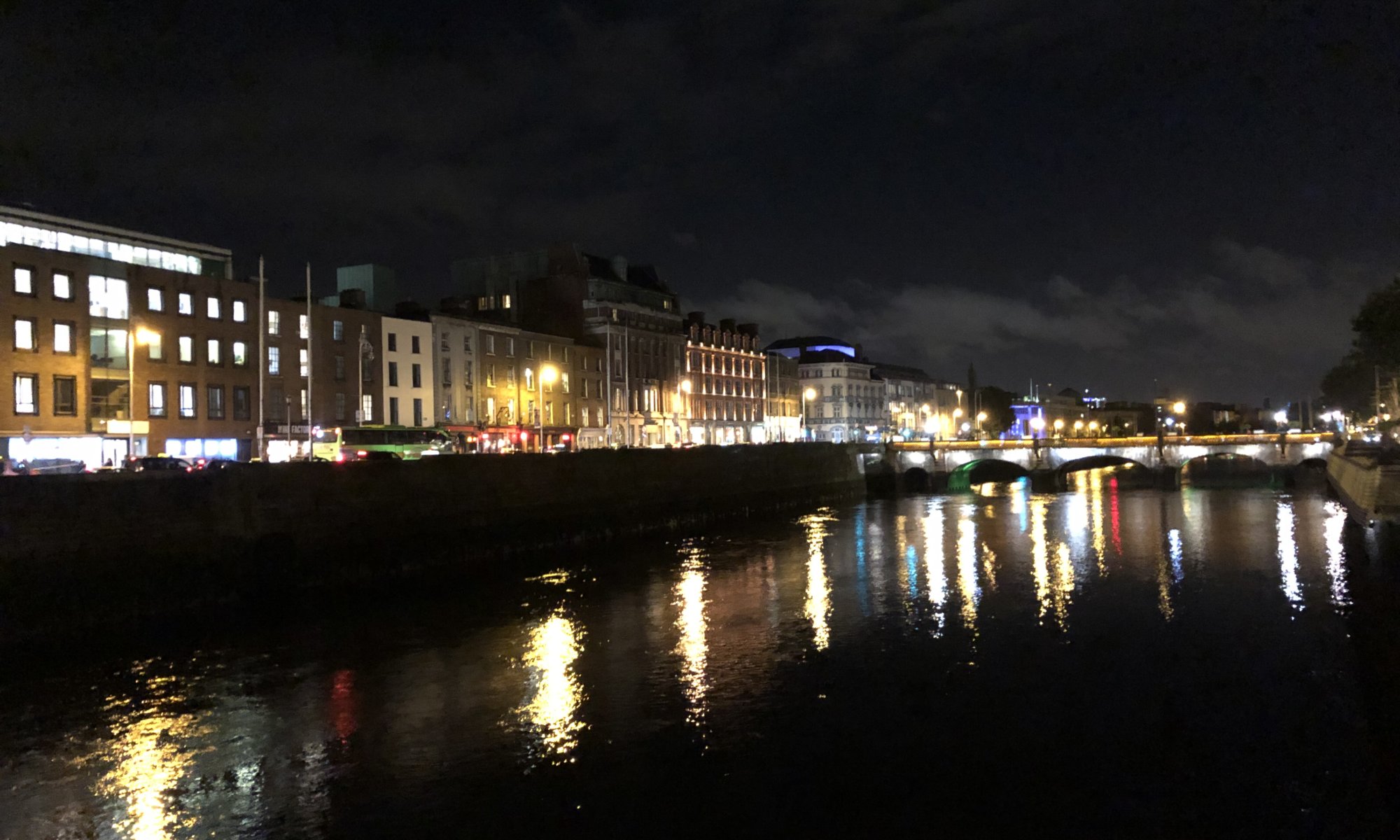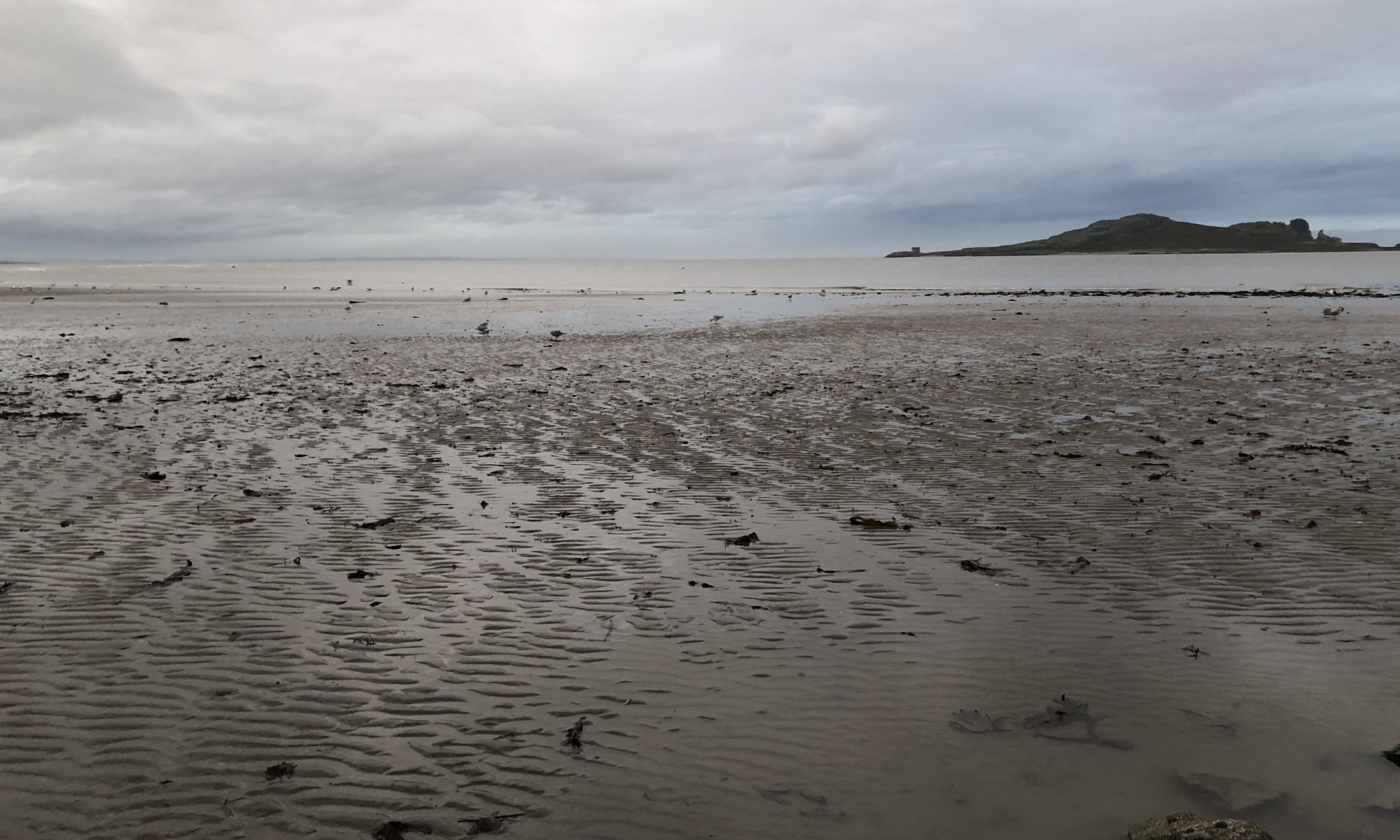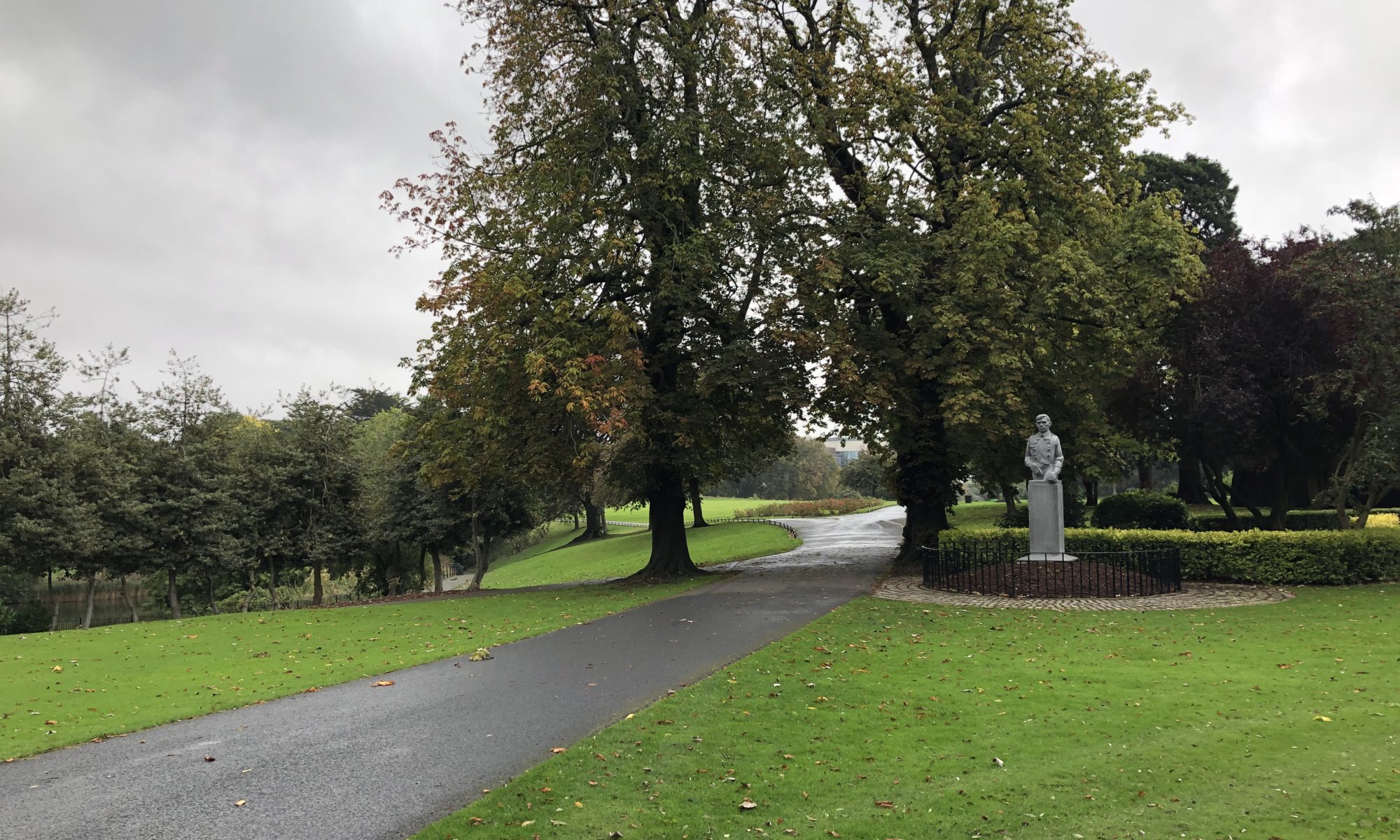If you need a place to relax in the city centre of Dublin, Ireland, you can find Merrion square close to Trinity college. It is a garden in the Georgian style which was planned and realized after 1762. It contains a collection of historic street lanterns, an underground air-raid shelter but it is mostly known for a sculpture placed here: Oscar Wilde iconically hanging out on a stone. The author of The Picture of Dorian Gray and The Canterville Ghost was living between 1855 and 1876 in Merrion Square 1.
Continue reading “Merrion square”Trinity college
Trinity college is a well-known university in Dublin, Ireland. Its campus is located directly in the city centre and it was created with Oxford and Cambridge in mind – a real ivy-league university. The university was founded in 1592 (yes, really!) by Queen Elizabeth and is the oldest of Ireland and one of the oldest in the world. Very uncommon for a university is that it is very much visited by tourists. And that is not only because of the beautiful buildings and the campanile (a tower on the campus).
Continue reading “Trinity college”Lovely day for a Guinness
There is one thing everybody does when travelling to Dublin, Ireland: a visit to the Guinness Storehouse, the original place (St. James’s Gate) where this special stout was invented and produced. It is not a museum nor a bar – it is a continuous event for the masses. The exhibition is organized to welcome many spectators and you’re inside a neverending flow of persons that enjoy the edutainment served here: from the ingredients in the basis, over the production process to the roof bar where you get a beer with your ticket.
Continue reading “Lovely day for a Guinness”Mummification
St. Michan‘s church in Dublin, Irland, is something special. At its location a Danish chapel from 1095 was standing, the current building looking a bit like a ruin is dating back to the year 1668. Since the Victorian times, people get here to visit the vaults underneath – even Bram Stoker, the author of Dracula is said to have visited them. The reason for that is a bit spooky: inside the vaults, you can find corpses from the 17th to the 19th century. But they didn’t deteriorate normally, they didn’t become dust – they mummified without human help.
Continue reading “Mummification”St. Patrick‘s cathedral
It is said that at the location of the beautiful St. Patrick’s cathedral in Dublin, Ireland, in the year 450 a spring existed in which Saint Patrick baptised new believers. Later a wooden chapel was built there and from 1191 on it became what it is today: the largest church of Ireland. It is 91 meters long and the tower has a height of 43 meters. In 1860 massive restoration works were necessary, financed by Benjamin Guinness (you know his profession). Most parts of the walls and decorations, therefore, come from the Victorian age.
Continue reading “St. Patrick‘s cathedral”Dublin castle
If you’re looking out for Dublin castle at Dublin, Ireland, don’t expect a castle standing separated somewhere on a hill. The wonderful ancient structures are integrated into a complex of buildings and you need to search a little bit to find them. In this location already in the 10th century, a fortress was built – but the buildings existing there today date back to the 18th and 19th century. This is also true for the wonderful round Record Tower, the most remarkable structure there today.
Continue reading “Dublin castle”Glasnevin
It sounds a bit strange but I really love to visit cemeteries. Sometimes they have a fantastic atmosphere like the Cimetière du Père Lachaise in Paris, France or the special local burial traditions are fascinating like at the Cementerio Cristóbal Colón in La Habana, Cuba. And often they are the starting point for interesting stories. The most beautiful graveyard of Dublin, Ireland is Glasnevin; here you can find a mix of all religions and the typical Irish combination of Catholic crosses and pagan symbols.
Continue reading “Glasnevin”Liffey
If you get to Dublin, Ireland, you will definitely stumble open the river Liffey. It runs through the city centre from East to West and at its shore, you will find good hotels, restaurants and bars. Unfortunately, they don’t really make use of the river there – next to the water there is on both sides a road. How beautiful this area could be if there would be a pedestrian zone. It is 125 meters long and has its main source in the county Wicklow not far away from Dublin where it runs into the Irish sea.
Continue reading “Liffey”Binn Éadair
Dublin, the capital city of Ireland is located close to the Irish sea. But when you’re roaming through the city you will not see much water – with the exception of the river Liffey. If you want to experience some sea-side life you can go to Howth, a fishermen’s village on the sea. Get there by taking the DART (Dublin Area Rapid Transit) train starting at the Connolly station. It was the first and only time I had problems with language in Ireland: I was going to the right railway track were the trains to Howth should leave – and the train was going to Binn Éadair instead. I had to ask a local to understand that this is just the Irish name for that place – and it even sounds much better.
Continue reading “Binn Éadair”Phoenix park
The Páirc an Fhionnuisce or Phoenix park is a vast garden in Dublin, Ireland, and one of the largest parks in a city in Europe. Its name doesn’t point to the legendary bird that can rise from the ashes; it comes from the Irish words fionn uisce which mean ‘clear water’. It is located in the East of the city and you can easily reach it from the luas stop ‘Museum’ and it is also a good option for a next stop if you visit Kilmainham Goal or the Museum of Modern Art.
Continue reading “Phoenix park”